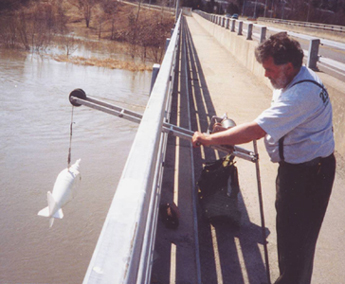|
High mercury content in fish is a growing concern in New England, and people in most areas are under official advisories to limit fish consumption. Yet the pathways of mercury movement from atmospheric deposition on the landscape to its ultimate uptake by fish are poorly understood. This project grew out of my collaboration with the University of Vermont on mercury cycling studies in the Lake Champlain basin. Leading from our finding that mercury transport in headwater streams is dominated by particulate mercury at high flows, we have focused on high flow sampling in the major Lake Champlain tributaries. The aim of this study is to understand the dominant pathways by which atmospheric Hg enters the lake, as well as the seasonal and hydrologic controls on mercury movement and methylation. I am analyzing mercury and methylmercury concentrations as a function of land use and land cover in each tributary basin. These findings should provide guidance on land management practices that may reduce methylmercury in surface waters.
|




